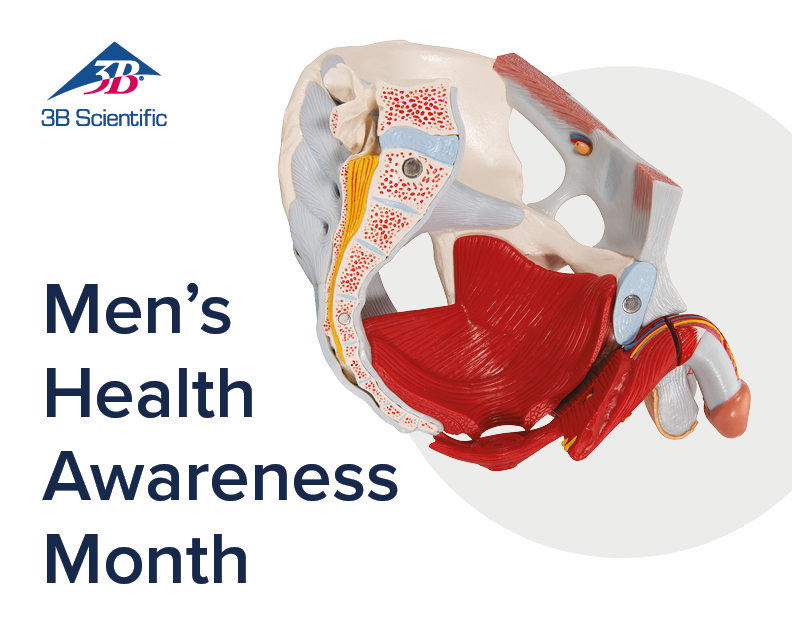Men's Health Awareness Month: A deep dive into ‘Movember’
Every year during November, a remarkable transformation sweeps across men of diverse ages and cultures worldwide. It's a phenomenon affectionately referred to as "Movember," where facial hair takes center stage for an entire month. Beyond being a simple fashion statement, Movember is a profound symbol of solidarity with an important purpose – to shed light on pressing concerns surrounding men's health. These issues encompass not only prostate and testicular cancer but also the often-overlooked realm of mental health. In our ongoing mission to advocate for these vital topics, let's delve deeper into prostate cancer and testicular cancer.
1. Prostate Cancer
Prostate cancer is one of the most prevalent cancers affecting men. It originates in the prostate gland, an essential organ that contributes to the formation of semen.
The causes and risk factors
The precise causes of prostate cancer remain elusive, but several factors increase the risk of developing cancerous cells in the prostate. These factors include age, smoking, obesity, family history, genetics, and a sedentary lifestyle.
Early detection and screening
Early detection is the key to combating prostate cancer effectively. Two primary methods for early detection are:
1. Prostate-Specific Antigen (PSA) Test: This involves measuring the levels of PSA in the blood, which can indicate potential issues with the prostate.
2. Digital Rectal Exam (DRE): In this procedure, a doctor inserts a gloved, lubricated finger into the rectum to physically examine the prostate gland.
If you are over 40 years of age, it is highly advisable to discuss these early detection tests with your healthcare provider. Remember, early detection can save lives.
Training tools for healthcare professionals
For healthcare professionals seeking to better understand the prostate gland and perform DREs accurately, consider utilizing specialized training tools. Two valuable resources for this purpose are the 3B Scientific Prostate Gland Model with Smart Anatomy and the Prostate Examination Trainer.
2. Testicular cancer
Testicular cancer is a form of cancer that primarily develops in the testicles of boys and young men. While it is relatively rare, the incidence of testicular cancer has been on the rise. The silver lining is that when detected early, testicular cancer can be effectively treated.
Causes and risk factors
One of the most common risk factors associated with testicular cancer is undescended testicles, a condition known as cryptorchidism. Data reveals that approximately 3 to 5% of boys are born with their testicles situated inside their abdomen. In some cases, the testicles naturally descend into the scrotum during the first year of life. However, for others, the testicles do not descend and may require surgical intervention.
Recognizing symptoms
While some men with testicular cancer may not experience any noticeable symptoms, there are several indicators that should not be ignored:
1. A lump or swelling in the testicle
2. Breast growth and/or soreness
3. Early puberty
4. Advanced symptoms, such as low back pain, chest pain, abdominal pain, headaches, and confusion
If you notice any of these symptoms or anything else that strikes you as abnormal or different, it's imperative to consult your healthcare provider without delay.
Detection and screening
The most common method of detecting testicular cancer is through a physical examination conducted during your annual check-up with your primary care physician. In addition to this, ultrasound imaging, blood tests, and, in some cases, surgical removal of the testicle can confirm the diagnosis.
Self-examination plays a crucial role in early detection as well. Regularly examining your own body can help you notice any changes in your testicles and detect the presence of cancer at the earliest stage.
To aid in educating students and healthcare professionals about testicular cancer, consider exploring our educational tools such as the Anatomy Model of the Male Pelvis with Testicles. By spreading awareness and knowledge, we can make a positive impact on the battle against testicular cancer and ensure that more men receive early and effective treatment. This November let's unite in the fight for men's health.
Follow us on Instagram, Facebook, LinkedIn, and X @3BScientific as we continue to share content supporting the cause throughout this month.
1. Prostate Cancer
Prostate cancer is one of the most prevalent cancers affecting men. It originates in the prostate gland, an essential organ that contributes to the formation of semen.
The causes and risk factors
The precise causes of prostate cancer remain elusive, but several factors increase the risk of developing cancerous cells in the prostate. These factors include age, smoking, obesity, family history, genetics, and a sedentary lifestyle.
Early detection and screening
Early detection is the key to combating prostate cancer effectively. Two primary methods for early detection are:
1. Prostate-Specific Antigen (PSA) Test: This involves measuring the levels of PSA in the blood, which can indicate potential issues with the prostate.
2. Digital Rectal Exam (DRE): In this procedure, a doctor inserts a gloved, lubricated finger into the rectum to physically examine the prostate gland.
If you are over 40 years of age, it is highly advisable to discuss these early detection tests with your healthcare provider. Remember, early detection can save lives.
Training tools for healthcare professionals
For healthcare professionals seeking to better understand the prostate gland and perform DREs accurately, consider utilizing specialized training tools. Two valuable resources for this purpose are the 3B Scientific Prostate Gland Model with Smart Anatomy and the Prostate Examination Trainer.
2. Testicular cancer
Testicular cancer is a form of cancer that primarily develops in the testicles of boys and young men. While it is relatively rare, the incidence of testicular cancer has been on the rise. The silver lining is that when detected early, testicular cancer can be effectively treated.
Causes and risk factors
One of the most common risk factors associated with testicular cancer is undescended testicles, a condition known as cryptorchidism. Data reveals that approximately 3 to 5% of boys are born with their testicles situated inside their abdomen. In some cases, the testicles naturally descend into the scrotum during the first year of life. However, for others, the testicles do not descend and may require surgical intervention.
Recognizing symptoms
While some men with testicular cancer may not experience any noticeable symptoms, there are several indicators that should not be ignored:
1. A lump or swelling in the testicle
2. Breast growth and/or soreness
3. Early puberty
4. Advanced symptoms, such as low back pain, chest pain, abdominal pain, headaches, and confusion
If you notice any of these symptoms or anything else that strikes you as abnormal or different, it's imperative to consult your healthcare provider without delay.
Detection and screening
The most common method of detecting testicular cancer is through a physical examination conducted during your annual check-up with your primary care physician. In addition to this, ultrasound imaging, blood tests, and, in some cases, surgical removal of the testicle can confirm the diagnosis.
Self-examination plays a crucial role in early detection as well. Regularly examining your own body can help you notice any changes in your testicles and detect the presence of cancer at the earliest stage.
To aid in educating students and healthcare professionals about testicular cancer, consider exploring our educational tools such as the Anatomy Model of the Male Pelvis with Testicles. By spreading awareness and knowledge, we can make a positive impact on the battle against testicular cancer and ensure that more men receive early and effective treatment. This November let's unite in the fight for men's health.
Follow us on Instagram, Facebook, LinkedIn, and X @3BScientific as we continue to share content supporting the cause throughout this month.




